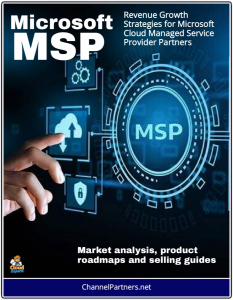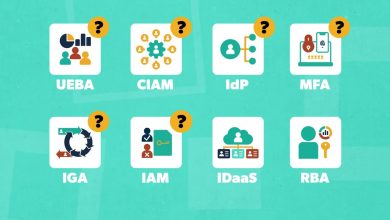FinOps as a Service for Azure Cloud Customers
The service enables these organizations to reduce cloud waste by 25 to 35 percent within the first year without the need to hire specialized staff.
 FinOps as a Service (FOaaS) provides outsourced Azure cost governance tailored for mid-market enterprises with 50 to 500 employees.
FinOps as a Service (FOaaS) provides outsourced Azure cost governance tailored for mid-market enterprises with 50 to 500 employees.
The service enables these organizations to reduce cloud waste by 25 to 35 percent within the first year without the need to hire specialized staff.
The revenue model combines tiered subscriptions ranging from $1,500 to $6,000 per month with a success fee of 1 percent of optimized spend. In the first year, the goal is to secure 12 paying customers, achieve $450,000 in annual recurring revenue, and reach break-even by the tenth month.
Problem
Azure customers frequently encounter visibility gaps because default Cost Management dashboards lack proper business-unit tagging. Waste accumulates through idle virtual machines, oversized SKUs, and forgotten development environments, often accounting for more than 30 percent of bills.
A shortage of skilled FinOps Certified Practitioners, who command salaries exceeding $180,000, compounds the issue. Additionally, there is an accountability void where engineering teams prioritize speed and finance focuses on budgets, leaving no one responsible for unit economics.
Solution
Instead of simply marking up Azure consumption and passing along volatile invoices, a forward-thinking MSP can offer “FinOps-as-a-Service.” FinOps, or Cloud Financial Operations, is a discipline that brings financial accountability to the variable spend model of the cloud. The MSP’s service focuses on providing governance, cost optimization, and predictability for the client’s Azure environment.
The service would involve using native tools like the Azure Pricing Calculator, Azure Cost Management, and Azure Advisor to proactively monitor, analyze, and optimize the client’s Azure spend.
Key activities include providing regular, easy-to-understand cost reports; identifying and eliminating wasted resources (such as oversized or orphaned virtual machines and storage); recommending the strategic use of cost-saving mechanisms like Azure Reservations and Azure Savings Plans for consistent workloads; and implementing budgets and spending alerts to prevent unexpected overages.
The managed service embeds a virtual FinOps team directly into the customer’s Azure tenant. During the first two weeks, automated tagging enforcement and an AI-driven baseline analysis are implemented using Power BI and Azure Cost Management APIs.
On a monthly basis, the service delivers rightsizing and reservation recommendations, including savings plans and reserved instances, along with chargeback show-back reports segmented by product or team, plus budget alerts and anomaly detection powered by Log Analytics and machine learning. Quarterly, an executive scorecard and engineering workshop are provided. All operations use secure Customer-Managed Keys, ensuring no data leaves Azure.
Target Market
The primary ideal customer profile consists of SaaS and digital-native firms spending between $25,000 and $250,000 per month on Azure. These are typically led by a CTO and CFO frustrated with unpredictable cloud bills and managing 100 to 1,000 virtual machines or more than 5,000 container instances. The focus is on English-speaking markets in the US and UK. The total addressable market includes approximately 18,000 Azure mid-market accounts based on Microsoft’s FY24 disclosures, with an 8 percent penetration yielding 1,440 prospects.
Competitive Edge
Compared to native Azure tools, which are free but require do-it-yourself effort, FaaS offers two-week onboarding versus six to eight weeks for competitors like CloudHealth or Cloudability, which charge over $4,000 monthly on fixed plans. Unlike consultants billing $150 to $300 per hour on a time-and-materials basis, FaaS aligns incentives through a 1 percent success fee, creating skin in the game.
Go-to-Market (90-day launch)
Before launch, an MVP dashboard will be built and three beta customers secured with no fee in exchange for six-month contracts and letters of intent. In the first month, LinkedIn outbound campaigns targeting FinOps Foundation members and an Azure Marketplace listing will aim to book 50 demos.
The second month focuses on co-selling with Azure ISV partners such as Pax8 and Crayon to convert 12 paid pilots. By the third month, a case study from the first beta customer will be published, targeting $60,000 in ARR and potentially raising seed funding if monthly recurring revenue exceeds $30,000.
Pricing & Packaging
This service can be priced in several ways, such as a percentage of the client’s total Azure spend, a percentage of the savings realized, or a flat monthly management fee, creating a new, high-value recurring revenue stream that is directly aligned with the client’s business objectives.
The service offers three tiers. The Starter tier costs $1,500 monthly plus 1 percent success fee, suited for spend under $50,000 per month. The Growth tier is $3,500 monthly plus 1 percent, ideal for $50,000 to $150,000 spend. The Scale tier runs $6,000 monthly plus 1 percent for spend above $150,000. A 90-day satisfaction guarantee promises a full refund if savings fall below 15 percent.
Unit Economics
For a customer with $100,000 monthly Azure spend, the service delivers average savings of 28 percent, or $28,000 per month. The success fee is $280, combined with a $3,500 base for total monthly recurring revenue of $3,780. Cost of goods sold, including one full-time equivalent at $120,000 loaded cost plus tools, is $1,200, yielding a 68 percent gross margin.
Team (Bootstrap)
The founding team includes the entrepreneur with prior experience as an Azure Cost Optimization lead, one engineer skilled in Terraform and Azure Policy automation, and one analyst focused on Power BI and customer success. A contractor pool handles peak workloads.
Risks & Mitigations
If savings are not realized, a 90-day ROI guarantee and prioritization of low-hanging fruit mitigate the risk. API changes by Azure are addressed through a wrapper microservice with a 72-hour patching SLA. Channel conflict is prevented via co-sell agreement templates with managed service providers.
12-Month Roadmap
In Q1, the target is 12 customers and $450,000 ARR. Q2 introduces an AWS module reusing 80 percent of existing intellectual property. Q3 launches Marketplace private offers aiming for $1.2 million ARR. Q4 pursues either Series A funding or profitability.



